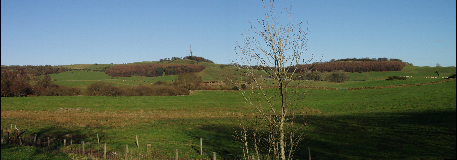

It is thought that the Parish of Kirkpatrick Irongray got its name from the Saint Patrick who had come to this part of Scotland from Ireland and that there had been a place of worship in the location since those early days, hence "Kirk" and "Patrick". The Parish is an old administration area of a County where there was a Parish School , the Parish Church with its Minister. The inhabitants of the Parish amount to only 500 at the present time.
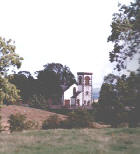
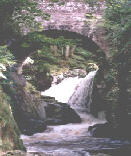
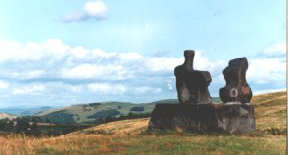
Irongray Church
One of the Glenkiln Statues
Routin’ Bridge
Irongray Church (above left) and its considerable older graveyard act as a focal point attracting many visitors to the Parish. It is an active parish of The Church of Scotland with regular worship taking place in the Church every Sunday and has its share of other services such as wedding and funerals. Irongray Parish is situated northwest of Dumfries and from the river Cairn on the northern boundary of the parish it extends south beyond the village of Shawhead and westwards to the hills above Glenkiln. The area is rich in features of cultural, historical and natural heritage interest. Interest is further added by links to ancient Celtic people, a strong Covenanting history, and more recently by the world class sculptures at Glenkiln. Several notable stories exist, foremost of which must be its strong association with Covenanting times when congregations followed ministers to the hills for illegal open-air 'conventicles'. The Martyrs' Tomb near Irongray Parish church commemorates the infamous execution of two Covenanters in the year 1685.
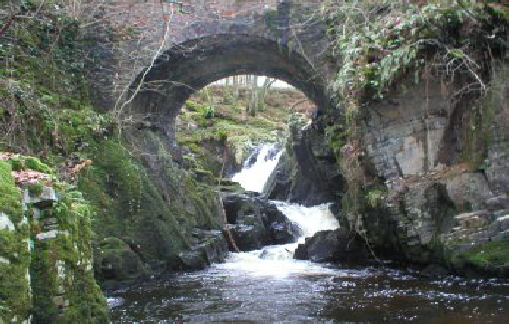
Kirkpatrick Irongray’s famous beauty spot - the Routin’Bridge
Irongray is a very rural parish stretching nine miles from fertile low-lying fields adjacent to the Dumfries boundary, to its western heights and the Glenkiln moors. The natural boundary on the north march is the Cairn Water which becomes Cluden Water near the Routin Brig: to the east and south it is bounded by Terregles and Lochrutton. The only centre of population is the small village of Shawhead (9 miles from Dumfries) where there is a primary school. At the first Census in 1841 there were 916 inhabitants in the parish: today there are 500.
The earliest reference (in 1274) refers simply to Kirkpatrick, one of several holy places dedicated to St. Patrick by itinerant monks from the Celtic monastic centre at Whithorn. These loca sancta, set apart for worship and the burial of the dead, often became sites for medieval churches under the parochial system which superseded the monasteries in the 12th C. Irongray was added later to distinguish this parish from its neighbour, Kirkpatrick-in-the-Moor (now Kirkpatrick Durham). Today Irongray is the territorial name of the parish, and Kirkpatrick Irongray that of the kirk.
The present church, on the original holy site above the River Cluden, was re-built in 1803, with the tower added in 1872. Sunday worship takes place there at 11.30a.m..
The parish has a strong Covenanting history – its minister, Rev. John Welsh, great-grandson of John Knox, was deprived of his living in 1662 when he would not conform to episcopacy, and became one of the first field-preachers. In 1678 he and three colleagues held the ‘Great Conventicle’ on Skeoch Hill, when the Sacrament was administered over 3 days to over 3,000 followers who came from as far as Ayrshire to worship in their chosen way. A monument at the site commemorates this historic event. At Hallhill there is a martyrs’ tomb to two Covenanters who were hanged on an oak-tree there during ‘the Killing Times’. Presbyterianism was restored in 1690, and the fortitude and integrity it encouraged is well revealed in The Heart of Midlothian by Sir Walter Scott who took the story of Irongray’s Helen Walker as the prototype for his heroine, Jeannie Deans.
The parish has a strong Covenanting history – its minister, Rev. John Welsh, great-
Scott erected Helen Walker’s tombstone in Irongray Kirkyard where a more recent heroine is also remembered on her parents’ stone – Jane Haining, a Church of Scotland missionary who chose to remain with her Jewish orphan charges and was exterminated with them at Auschwitz in 1944.
